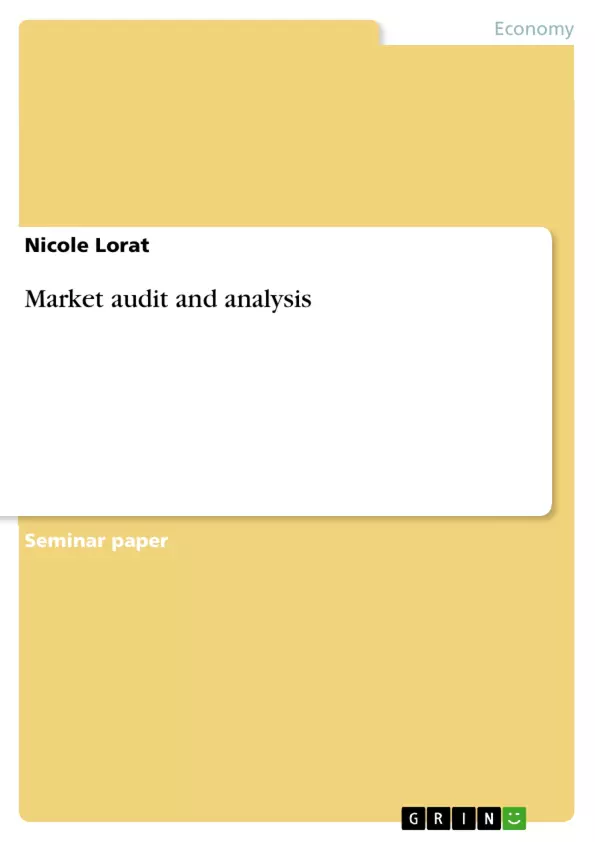This report uses an anonymous company which is looking at the process of conducting a complex marketing audit to provide information for corporate planning, identifying external factors influencing its commercial performance and ensuring the use of effective strategies to promote its products, markets and distribution channels in a complex and diversified market place.
This report is to help the organisation evaluate the most appropriate analysis tools.
It therefore looks at the micro and macro environment, the role of marketing information and research, critical assessments of analytical tools such as PESTEL, Porter's five force analysis, SWOT analysis and Boston Matrix.
Table of Contents
- Introduction / Purpose
- Marketing Environments
- Micro Environment
- Macro Environment
- The role of marketing information and research
- Critical assessments of analytical tools
- PESTEL Analysis
- Porter's five force analysis
- SWOT analysis
- Boston Matrix
- Appendices
Objectives and Key Themes
This report aims to provide Company X with a comprehensive marketing audit to inform corporate planning. It identifies external factors influencing the company's commercial performance and suggests effective strategies for promoting its products, markets, and distribution channels in a diverse marketplace. This report is crucial for the organization to evaluate the most appropriate analysis tools.
- Analyzing the marketing environment to understand internal and external factors.
- Identifying key stakeholders and their needs.
- Evaluating the role of marketing information and research in strategic decision-making.
- Exploring critical analytical tools such as PESTEL, Porter's Five Forces, SWOT, and the Boston Matrix.
- Developing effective strategies to promote products, markets, and distribution channels.
Chapter Summaries
- Introduction / Purpose: This chapter introduces Company X, a leading Power & Control component specialist, and outlines the objectives of the marketing audit, which aim to identify external factors influencing commercial performance and suggest effective strategies for promoting its products, markets, and distribution channels. The report will also evaluate appropriate analysis tools.
- Marketing Environments: This chapter explores the importance of the marketing environment in company planning, emphasizing the inward and outward perspectives. It presents the micro-environment, focusing on direct and indirect suppliers, consumers, customers, local stakeholders, and the internal environment. The macro-environment, which encompasses external factors like political, economic, social, technological, environmental, and legal aspects, is also discussed. This section highlights the need for companies like Company X to understand the impact of these factors on their performance.
- The role of marketing information and research: This chapter stresses the importance of understanding the current position, capabilities, and overall market place, including current and expected influences, before planning strategic direction. The chapter emphasizes the need for qualified information to avoid costly and damaging strategic missteps. It highlights the use of quantitative and qualitative research methods, like sales analysis, syndicated research, questionnaires, and group discussions, to identify trends, address weaknesses, and gather insights for improvement.
Keywords
The primary focus of this report revolves around marketing analysis, audit, and strategic planning. Key themes include the importance of understanding the marketing environment, both internally and externally, and utilizing effective analytical tools like PESTEL, Porter's Five Forces, SWOT, and the Boston Matrix. The report also highlights the crucial role of marketing information and research in informing strategic decision-making, while emphasizing the importance of understanding stakeholder needs and adapting to changing market dynamics.
- Quote paper
- Nicole Lorat (Author), 2005, Market audit and analysis, Munich, GRIN Verlag, https://www.grin.com/document/51413



